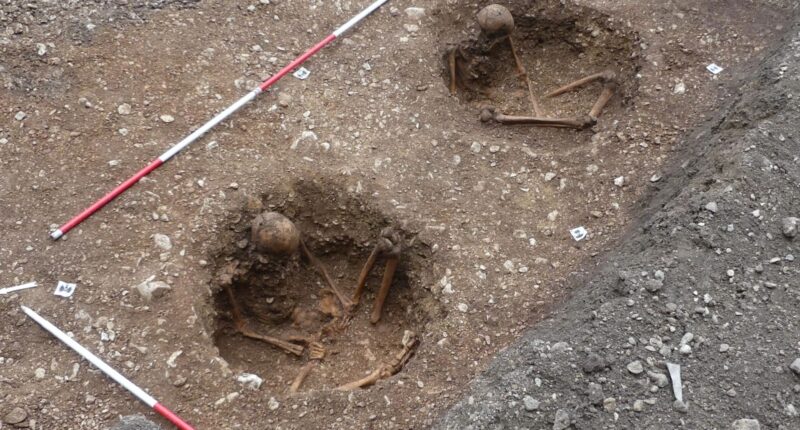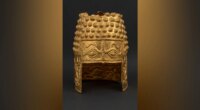RESEARCHERS have made a bizarre discovery in an ancient French cemetery.
A group of 13 circular graves have been located by archaeologists working in Dijon, France.



During the excavation of what used to be the garden of the Cordeliers convent next to the rue de Tivoli, scientists made a significant discovery of a burial site dating back to the second Iron Age.
Inside the 13 circular graves, the archaeologists found skeletons all in a seated position facing west.
France’s National Institute for Preventative Archaeological Research (INRAP), the team responsible for the find, highlighted the rarity of such a Gallic burial site, with only eight other similar sites known in France.
Only three other Gallic burial sites have been found in Switzerland.
The 13 circular pits measuring about one meter in diameter are equally spaced forming a 25 meter long strip south to north.
The bodies found at the site were positioned in a unique manner – each placed in a seated position with their backs against the eastern wall of the pit, representing a common burial practice from 450 to 25 BCE.
All of the skeletons are buried in exactly the same way with their arms resting across their torsos and hands near their pelvis or femurs.
According to INRAP, “their legs are very bent, often asymmetrically.”
Other than all of the bodies being buried with a black armband, there are no other personal or symbolic effects with them.
Despite centuries of erosion, the remains have been left remarkably intact leaving researchers a lot to work with and learn from.
Questions still remain about why the 13 people were buried in this manner but other discovered Gallic burial sites suggest it could be linked to their status in life.
It has been suggested that they may have been politically or religiously important.
INRAP states: “Only a dozen archaeological sites yield around fifty ‘seated’ deceased whose graves are placed near aristocratic dwellings or even sanctuaries or places of worship, away from the necropolises.
“Despite the remoteness of these sites, concordances are repeated: these sepulchral structures are installed at the edge of occupations; the individuals concerned are adults whose sex, when determined, is male.
“In addition, the uniformity of the positions (the same orientation, the careful arrangement of the corpse) recall the stone or metal figures of crouching or even sitting cross-legged dated between the end of La Tène and the High Empire; these burials evoke a practice probably intended for particular subjects.”
While these bizarre burial plots were found on the oldest part of the garden of the Cordeliers convent, another unusual find was made elsewhere on the site.
Archaeologists also found a necropolis dating to the 1st Century CE containing the remains of at least 22 children.
The full amount of bodies is unknown due to agricultural work destroying some of the graves.


But from the remains that have been left intact, the children are believed to have died before they were a year old.
They were each buried on their backs or sides which was typical for the time.
The children were buried with a range of artefacts including stone casings, nails, coins, and ceramics.
Researchers also found the remnants of wooden coffins which have since rotted away.
INRAP said: “The absence of older subjects seems to indicate that this is a space dedicated to the burial of very young children.”
However, at some point the space was used for agriculture and then for butchery.
The team found ancient planting pits near the graves as well as bovine skulls from the 16th or 17th century CE.
Meanwhile, a haul of Bible-era British gold coins have been found in the Netherlands and believed to be the spoils of war from conquering Romans.



















